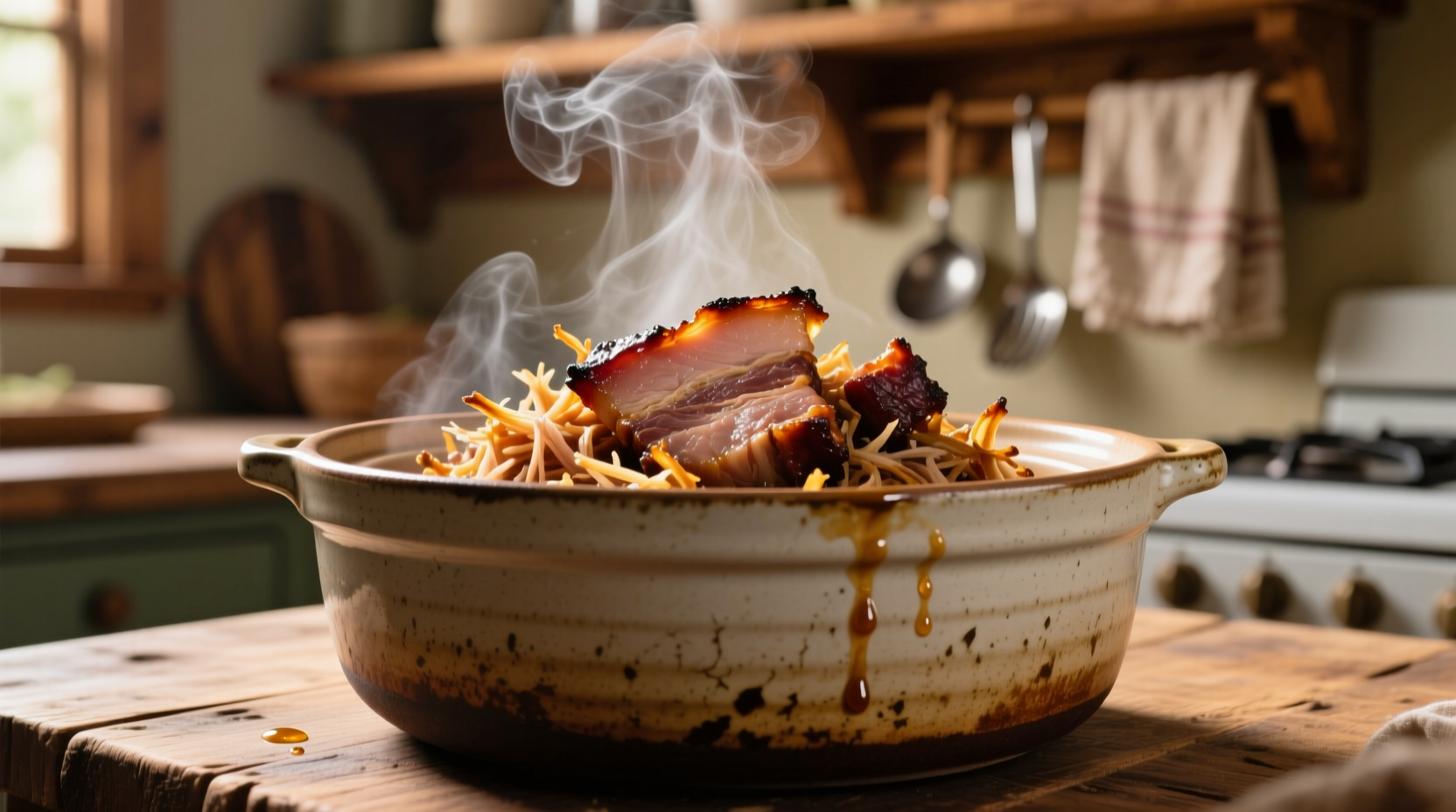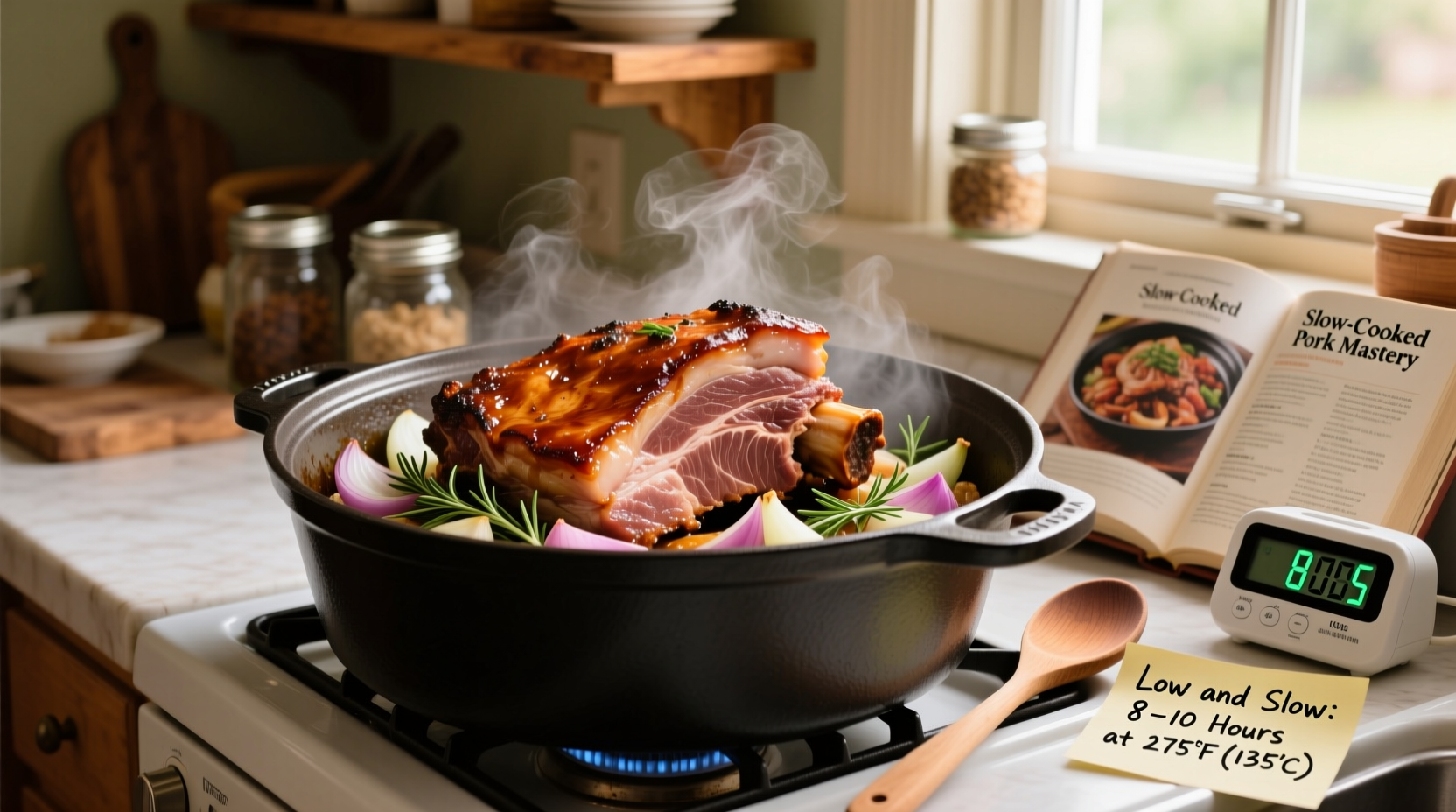Getting perfect slow-cooked pork shouldn't be a guessing game. Whether you're preparing a Sunday dinner or meal prepping for the week, understanding the precise timing for different pork cuts transforms tough, inexpensive meat into succulent, flavorful meals. This guide delivers exact timeframes backed by food science and professional culinary expertise—so you'll never serve dry or undercooked pork again.
Understanding Pork Cuts and Their Cooking Requirements
Not all pork cuts behave the same in a slow cooker. The connective tissue and fat content dramatically affect cooking times. Muscular cuts with abundant collagen, like pork shoulder, need longer cooking to break down tough fibers, while leaner cuts like tenderloin require less time to avoid drying out.
| Pork Cut | Recommended Time (LOW) | Recommended Time (HIGH) | Internal Temp |
|---|---|---|---|
| Pork Shoulder (Boston Butt) | 8-10 hours | 5-6 hours | 195-205°F |
| Pork Loin | 6-8 hours | 3-4 hours | 145°F |
| Pork Ribs | 6-8 hours | 4-5 hours | 190-203°F |
| Pork Tenderloin | 4-6 hours | 2-3 hours | 145°F |
The Science Behind Slow Cooking Pork
Slow cooking works through a process called collagen hydrolysis. When pork connective tissue reaches 160°F, collagen begins transforming into gelatin—a process that continues until 205°F. This scientific principle explains why tougher cuts need extended cooking times. The USDA Food Safety and Inspection Service confirms that pork becomes safe to eat at 145°F, but achieving optimal tenderness requires higher temperatures for collagen-rich cuts (USDA FSIS).
Collagen Breakdown Timeline
- 160°F: Collagen conversion begins
- 180°F: Significant tenderness improvement
- 195-205°F: Optimal gelatinization for pulled pork
- 210°F+: Risk of drying out the meat
Practical Timing Guidelines for Perfect Results
While standard timeframes provide a foundation, several factors influence actual cooking duration. The National Pork Board's research shows that starting temperature, meat thickness, and slow cooker model can create up to 2-hour variations in cooking time (National Pork Board).
Pork Shoulder/Boston Butt (8-10 hours on LOW)
This collagen-rich cut benefits from extended cooking. For pulled pork sandwiches, cook until internal temperature reaches 195-205°F. At this temperature, collagen fully converts to gelatin, allowing the meat to shred effortlessly. America's Test Kitchen testing confirms that shoulder cooked for less than 8 hours on LOW often remains tough despite reaching safe temperatures.
Pork Loin (6-8 hours on LOW)
As a leaner cut, pork loin requires careful timing to prevent dryness. Insert a meat thermometer during the final hour of cooking. Remove immediately when reaching 145°F, then let rest for 3 minutes—the temperature will continue rising to the safe 147°F mark. Overcooking by just 30 minutes can reduce moisture content by 15%, according to culinary science research from the Culinary Institute of America.
Critical Safety Considerations
Food safety must never be compromised for tenderness. The USDA maintains that all pork should reach a minimum internal temperature of 145°F with a 3-minute rest period. For slow-cooked pulled pork dishes where higher temperatures are needed for texture, safety is maintained through the extended time at elevated temperatures, which destroys pathogens effectively.
Troubleshooting Common Slow Cooking Issues
Problem: Pork remains tough after recommended time
Solution: Continue cooking in 30-minute increments until fork-tender. This often happens with larger cuts or when starting with frozen meat.
Problem: Pork is dry despite following time guidelines
Solution: You likely used a lean cut (like loin) for too long. For future reference, reduce cooking time by 1-2 hours or choose a fattier cut like shoulder.
Problem: Liquid hasn't reduced sufficiently
Solution: Remove meat, then switch to HIGH setting with lid off for 30-60 minutes to reduce sauce.

Pro Tips for Flavorful, Tender Results
Professional chefs consistently recommend these techniques for superior slow-cooked pork:
- Sear first: Brown all sides in a hot pan before transferring to slow cooker for deeper flavor
- Acid balance: Add 2 tablespoons of vinegar or citrus juice to help break down fibers
- Fat side up: Position fatty cuts with fat layer facing up to naturally baste the meat
- Don't peek: Resist opening the lid—each peek adds 20 minutes to cooking time
- Rest properly: Let cooked pork rest in the slow cooker with lid on for 15-30 minutes before serving
When Standard Guidelines Need Adjustment
These time recommendations assume:
- Chilled (not frozen) meat placed in slow cooker
- 3-4 pound cut in a standard 6-quart slow cooker
- Covered cooking with minimal liquid (½-1 cup)
- Consistent power supply without interruptions
Adjust cooking time downward by 1-2 hours when using smaller cuts (under 2 pounds) or newer programmable slow cookers with precise temperature control.











 浙公网安备
33010002000092号
浙公网安备
33010002000092号 浙B2-20120091-4
浙B2-20120091-4